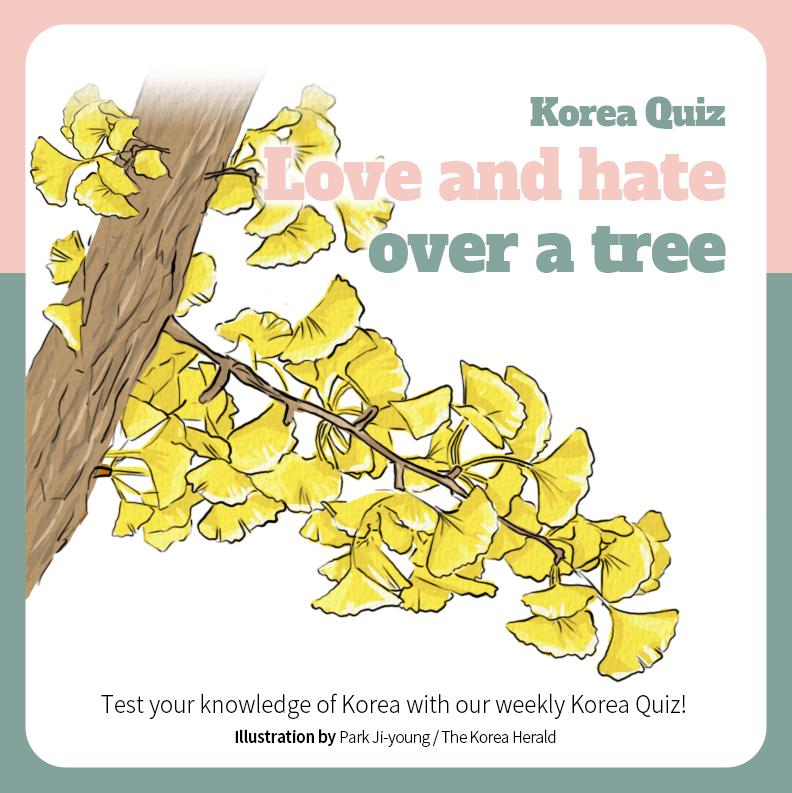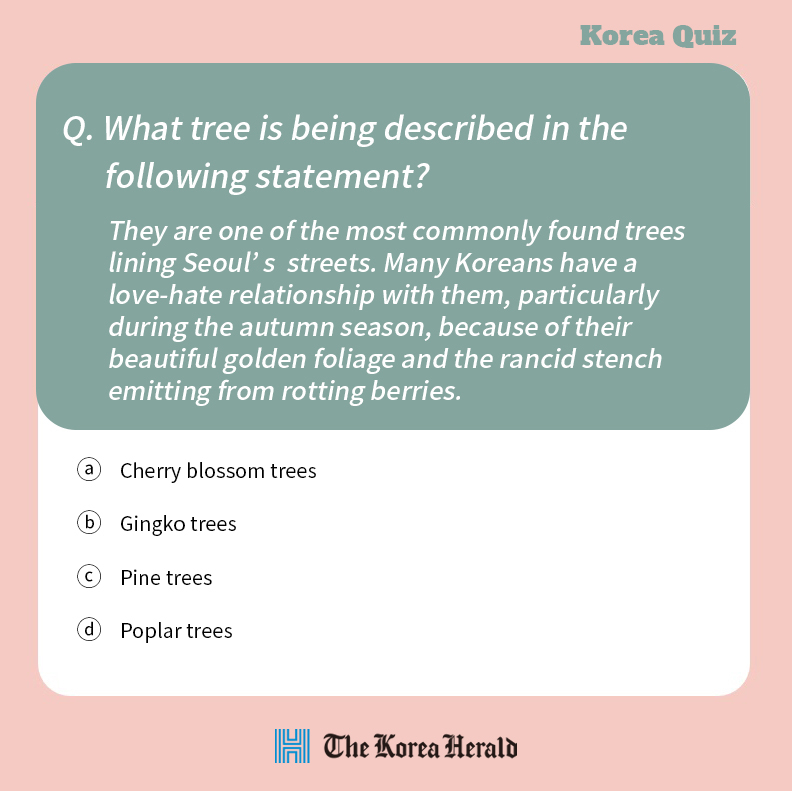Test your knowledge of Korea with our weekly quiz on the language, culture, history or anything K-related. -- Ed.


Find the answer at the bottom of the page.
Ginkgo trees are one of the most prevalent kinds of roadside trees in Korea, along with cherry blossom trees. There are about 114,000 gingko trees in Seoul alone, accounting for nearly one-third of the city’s street trees.
They are easy to grow, require virtually no maintenance once established and are tolerant of pollution.
The seeds, harvested in fall, are used in many traditional Korean recipes, believed to be good for the brain and blood circulation.
On top of that, the leaves turn a spectacular shade of yellow in the fall, providing a chance to enjoy the season’s beauty right in the middle of a busy city.
The treat, however, comes at a cost. Female gingko trees produce nuts that have a very strong odor, often likened to vomit, dirty socks or sewage. When the nuts are ripe, they fall on the ground. A mistaken step leaves the unpleasant smell on shoes.
So for about two months from mid-September and through early November, local authorities are bombarded with complaints from residents over ginkgo nuts. The offices usually respond by dispatching workers with equipment to preemptively harvest the nuts before they fall. More recently, some have installed nets around female trees to prevent the nuts from falling to the ground and being stepped on by pedestrians.
Answer: b



![[Herald Interview] 'Trump will use tariffs as first line of defense for American manufacturing'](http://res.heraldm.com/phpwas/restmb_idxmake.php?idx=644&simg=/content/image/2024/11/26/20241126050017_0.jpg)

![[Health and care] Getting cancer young: Why cancer isn’t just an older person’s battle](http://res.heraldm.com/phpwas/restmb_idxmake.php?idx=644&simg=/content/image/2024/11/26/20241126050043_0.jpg)

